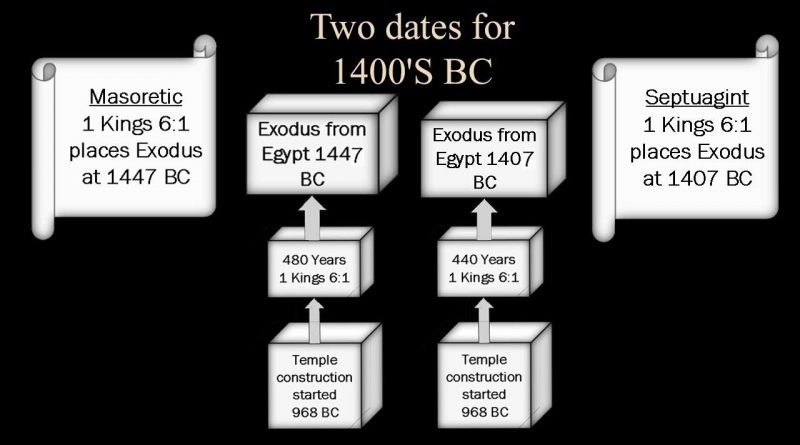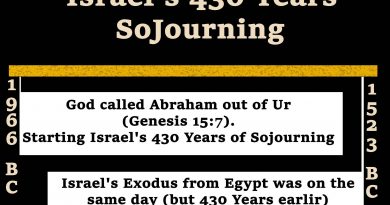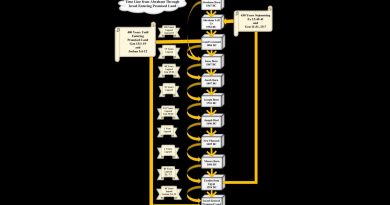1446 BC Exodus Date
A popular way for scholars to calculate the Exodus is to focus on 1 Kings 6:1, which says, “It came to pass in the four hundred and eightieth year after the children of Israel were come out of the land of Egypt, in the fourth year of Solomon’s reign over Israel, in the month Zif, which is the second month, that he began to build the house of the LORD.”
Using this evidence, we can calculate the Exodus per 1 Kings 6:1. Starting with 966 BC (the date of temple construction started) and adding 480 years (the length of time from 1 Kings 6:1) this gives us 1446 BC.
The date 1446 BC is a simple conclusion but does not meet the test of continuity with other Scriptures.
The first problem with 1446 BC is that it does not allow enough time. Acts 13:20 tells us that the time of the Judges lasted 450 years. This does not include 84 years for three kings, 40 years in the wilderness, and seven years for the conquest of Canaan. According to Acts, 581 years is needed, but 1 Kings 6:1 only allows for 480 years, a deficiency of 101 years.
Two commentators Barns and Lumby express concern over the apparent conflict between Scripture.
- Barn’s Notes on the Whole Bible — “Though the books of Joshua, Judges, and Samuel furnish us with no exact chronology, they still supply important chronological data – data which seem to indicate for the interval between the Exodus and Solomon, a period considerably exceeding 480 years.”[1]
- The Pulpit Commentary — “It is difficult to reconcile this statement with other chronological notices both of the Old and New Testament. For taking the numbers which we find in the Hebrew text of the books which refer to this period, they sum up to considerably more than 480 years. The time of the Judges alone comprises 410 years at the least.”[2]
The argument for the 1446 BC Exodus is based on the 480 years. However, the math shows that this date does not hold up to internal scrutiny.
[1] Albert Barns, Notes on the Whole Bible.
[2] Joseph S. Exell. The Pulpit Commentary, I Kings (New York: Funk and Wagnalls), p. 99.




